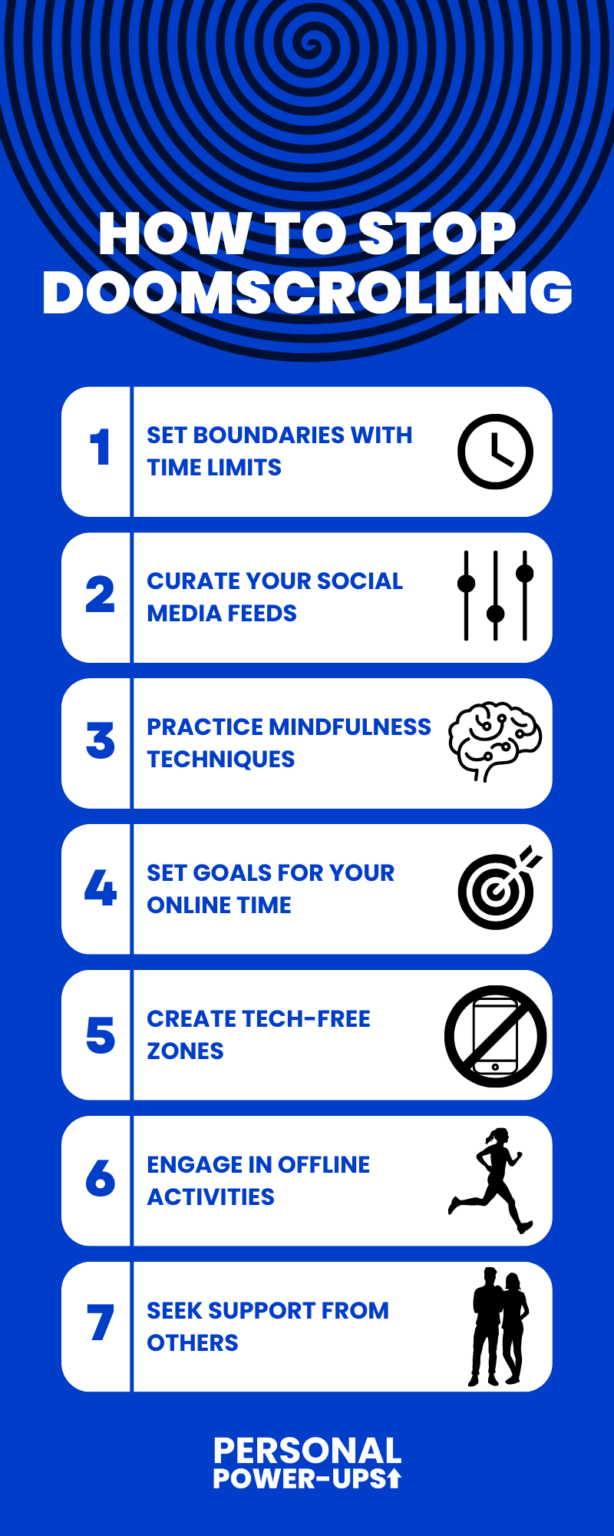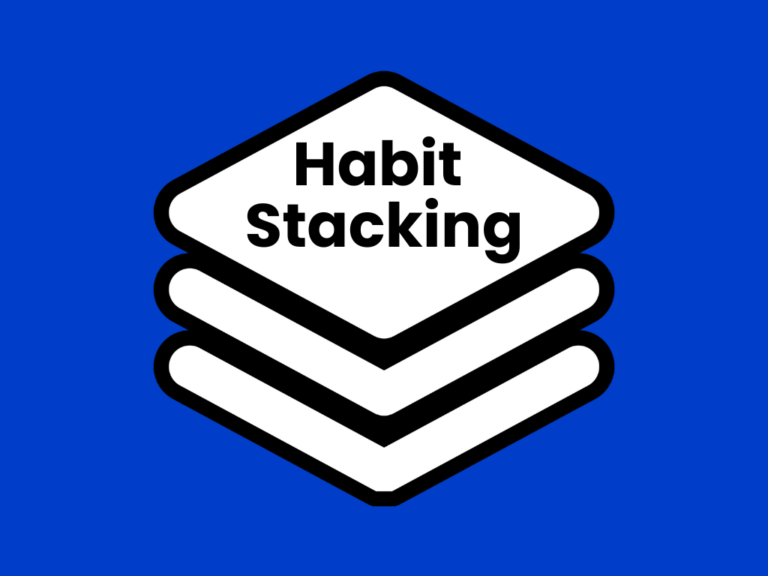It’s late at night, and you’re curled up in bed, mindlessly scrolling through your social media feed. As you scroll, you find yourself bombarded with a never-ending stream of negative news headlines, polarizing political posts, and doom-laden updates about the state of the world.
Despite the knot of anxiety forming in your stomach, you can’t seem to tear yourself away from the screen. Sound familiar? If you’ve ever found yourself trapped in this scenario, you’re not alone. Many of us have fallen victim to the phenomenon known as “doomscrolling” – the compulsive habit of endlessly scrolling through negative or distressing content online, often to the detriment of our mental well-being.
But fear not, because breaking free from this cycle is possible. In this blog post, we’ll explore seven effective tips to help you stop doomscrolling and regain control of your online habits. So get ready to reclaim your digital sanity!
Contents
What Is Doomscrolling?
Doomscrolling refers to the act of compulsively scrolling through endless streams of negative or distressing content on social media, news websites, or other online platforms.
It often starts innocently enough – perhaps you’re just checking your social media feed or catching up on the day’s headlines. However, as you continue scrolling, you find yourself drawn deeper and deeper into a vortex of doom and gloom. You may come across alarming news stories, divisive political debates, or distressing images that evoke feelings of anxiety, stress, or despair.
What distinguishes doomscrolling from regular online browsing is the sense of compulsion and inability to disengage, even when it’s clear that the content is having a negative impact on your mental well-being and productivity.
Despite feeling increasingly overwhelmed or distressed, you find yourself unable to stop scrolling, trapped in a cycle of seeking out more information or validation, only to be met with further negativity. This habit can be particularly insidious because it often occurs during times of stress or uncertainty, serving as a distraction or coping mechanism that ultimately exacerbates feelings of unease.
Now you know what doomscrolling is, let’s explore the 7 effective ways to stop doomscrolling!

▼ Ad
1. Set Boundaries with Time Limits
One of the most effective ways to stop doomscrolling is by setting clear boundaries for how much time you allow yourself to spend on social media or news websites each day.
You can do this by using apps or features that track your screen time and set limits accordingly, like Space or the App Limits feature on Apple products. Say you decide to only allow yourself 30 minutes of scrolling time per day and you install an app that makes sure you stick to that time limit. By doing this, you’ll become more conscious of how much time you’re spending online and be more inclined to prioritize other activities.
Example: Let’s say you notice yourself reaching for your phone every time you have a free moment. Instead of mindlessly scrolling through social media during your lunch break, try setting a timer for 15 minutes and spend that time reading a book or going for a walk outside. By consciously limiting your screen time, you’ll gradually break the habit of doomscrolling.
2. Curate Your Social Media Feeds
Another effective strategy for stopping doomscrolling is to curate your social media feeds to include more positive and uplifting content. Unfollow accounts or mute keywords that consistently share negative news or trigger feelings of anxiety.
Instead, follow accounts that inspire you, share helpful tips, or showcase beautiful imagery. By surrounding yourself with more positive content, you’ll naturally feel less inclined to engage in doomscrolling.
A bonus tip how you can further stop doomscrolling is by using grayscale on your phone. This makes sure your phone isn’t as attractive by making everything black and white.
Example: If you find yourself constantly bombarded with political arguments or distressing news stories on your Twitter feed, consider unfollowing those accounts and following ones that share cute animal videos, motivational quotes, or mindfulness tips instead. This simple adjustment can make a significant difference in your online experience.
3. Practice Mindfulness Techniques
Mindfulness techniques can be powerful tools for combating doomscrolling. When you notice yourself getting caught up in negative news or social media posts, take a moment to pause and check in with yourself.
Practice deep breathing exercises, meditation, or simply focus on the present moment. By grounding yourself in the here and now, you’ll be better equipped to resist the urge to continue scrolling mindlessly.
Example: Let’s say you come across a particularly distressing news article while scrolling through your Facebook feed. Instead of immediately clicking on the comments section or scrolling for more information, take a deep breath and remind yourself that you have the power to choose how you engage with this content. Redirect your focus to something positive or simply close the app altogether.
▼ Ad
4. Set Goals for Your Online Time
Rather than aimlessly scrolling through social media or news websites, set specific goals for what you want to accomplish during your online time. This could include catching up with friends, researching a topic of interest, or finding inspiration for a creative project. By having a clear purpose for your online activity, you’ll be less likely to fall into the trap of doomscrolling.
Example: Let’s say you want to improve your cooking skills. Instead of mindlessly scrolling through food photos on Instagram, set aside 20 minutes each day to watch cooking tutorials on YouTube or browse recipes on cooking websites. By channeling your online time towards a specific goal, you’ll feel more fulfilled and less inclined to engage in doomscrolling.
5. Create Tech-Free Zones
How do you stop doomscrolling when you can scroll everywhere? Instead, designate certain areas of your home or specific times of day as tech-free zones where you’re not allowed to use electronic devices. This could be during meals, before bedtime, or in designated relaxation areas. By creating boundaries around when and where you use technology, you’ll be less likely to engage in mindless scrolling habits.
Example: Consider implementing a rule where electronic devices are not allowed at the dinner table. Instead of scrolling through your phone while eating, use this time to connect with your family or practice gratitude by sharing highlights from your day. By establishing tech-free zones, you’ll cultivate healthier habits and reduce the temptation to doomscroll.
6. Engage in Offline Activities
One of the most effective ways to combat doomscrolling is by engaging in offline activities that bring you joy and fulfillment. This could include hobbies such as painting, gardening, playing music, or going for a hike. By immersing yourself in activities that nourish your soul, you’ll naturally spend less time glued to your screens. And by replacing your online time with a particular offline activity, you make it easier for yourself to replace a bad habit with a good one.
Example: Let’s say you’ve always wanted to learn how to play the guitar. Instead of spending hours scrolling through social media, dedicate that time to practicing guitar chords or learning new songs. Not only will you develop a new skill, but you’ll also reduce the urge to doomscroll by filling your time with meaningful offline activities.
7. Seek Support from Others
Finally, don’t be afraid to seek support from friends, family, or mental health professionals if you’re struggling to stop doomscrolling on your own. Talking openly about your challenges and sharing strategies with others can provide valuable insight and encouragement. Remember, you’re not alone in this journey, and there are people who care about your well-being and want to help you succeed.
Example: If you find yourself constantly falling into the doomscrolling trap despite your best efforts, reach out to a trusted friend or family member for support. Share your struggles with them and brainstorm potential solutions together. Sometimes, simply knowing that you have someone in your corner can make all the difference in overcoming challenging habits.
▼ Ad
Conclusion: How Do I Stop Scrolling?
Doomscrolling can be a challenging habit to break, but with the right strategies and mindset, it’s entirely possible to regain control of your online habits and prioritize your mental well-being.
By setting boundaries, curating your online content, practicing mindfulness, setting goals, creating tech-free zones, engaging in offline activities, and seeking support from others, you can free yourself from the endless cycle of doomscrolling and embrace a more positive and fulfilling online experience.
Now you know how to stop doomscrolling. And remember, it’s not about completely eliminating screen time altogether, but rather finding a healthy balance that allows you to stay informed without sacrificing your mental health. So go ahead, implement these tips today, and reclaim your digital freedom!




